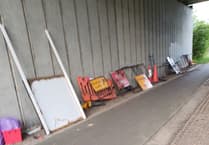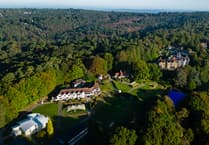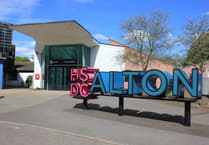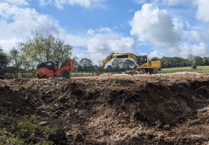THE PRESERVATION and recording of history is not just a matter of filing old papers in a dusty archive.
People’s memories are one of the most valuable sources of information and community groups are at the forefront of keeping the nation’s heritage alive.
Buriton Heritage Bank was launched in 2001 to collect information about the history and heritage of the parish, to share it more widely and to record it for all time. The project is co-ordinated by the Buriton Village Association.
The idea allows anyone to ‘pay in’ or ‘deposit’ information, experience and research and also to be able to ‘draw out’ information from the expanding pool of knowledge – to enhance their own appreciation of the local heritage and to develop their own studies.
The Rogate Society is another community group which is now seeking volunteers to help with research into the village’s past.
Resident Mairi Rennie, who is chairman of Rogate Heritage Centre, has put out an appeal in the parish magazine.
She writes: “Are there volunteers among villagers who might be willing to give information or to form small groups of, say, two or three persons, including families and their children, to carry out research on any of the following subjects on behalf of the society and report on their project from time to time.
“Perhaps history or other students could do a little research at whatever level as a coursework item?”
She suggests 11 topics which could be tackled.
The brickmaking industry in and around Rogate, including Rake, Nyewood and East Harting, was important for many decades as a source of employment.
Being a rural area, another source of work were the blacksmiths and forges of Rogate and Haben.
The farming depression of the 1920s and 1930s had quite an effect on life in Rogate, especially as the low price of land attracted builders to develop large houses which then became the centre of estates providing employment for domestic labour and gardening.
On a more social note, the heritage centre would like to gather memories from the oldest residents or people who can recall previous generations talking about changes such as when electricity arrived in 1934 and the village shops and tradespeople, many of whom have disappeared.
Public transport, including the railway line between Petersfield and Midhurst, ran close to Rogate and its effects are likely to be prominent in memories.
Aspects of the project which might require more research in depth include how water courses and drainage have changed over the years and where farm buildings have been converted into homes.
Many old field names have been changed in the parish and larger fields created through the removal of trees and hedges.
Former Rogate residents will be welcome to contribute to the work and others who have an interest in local history.
Mairi can be contacted by e-mail at: [email protected]




